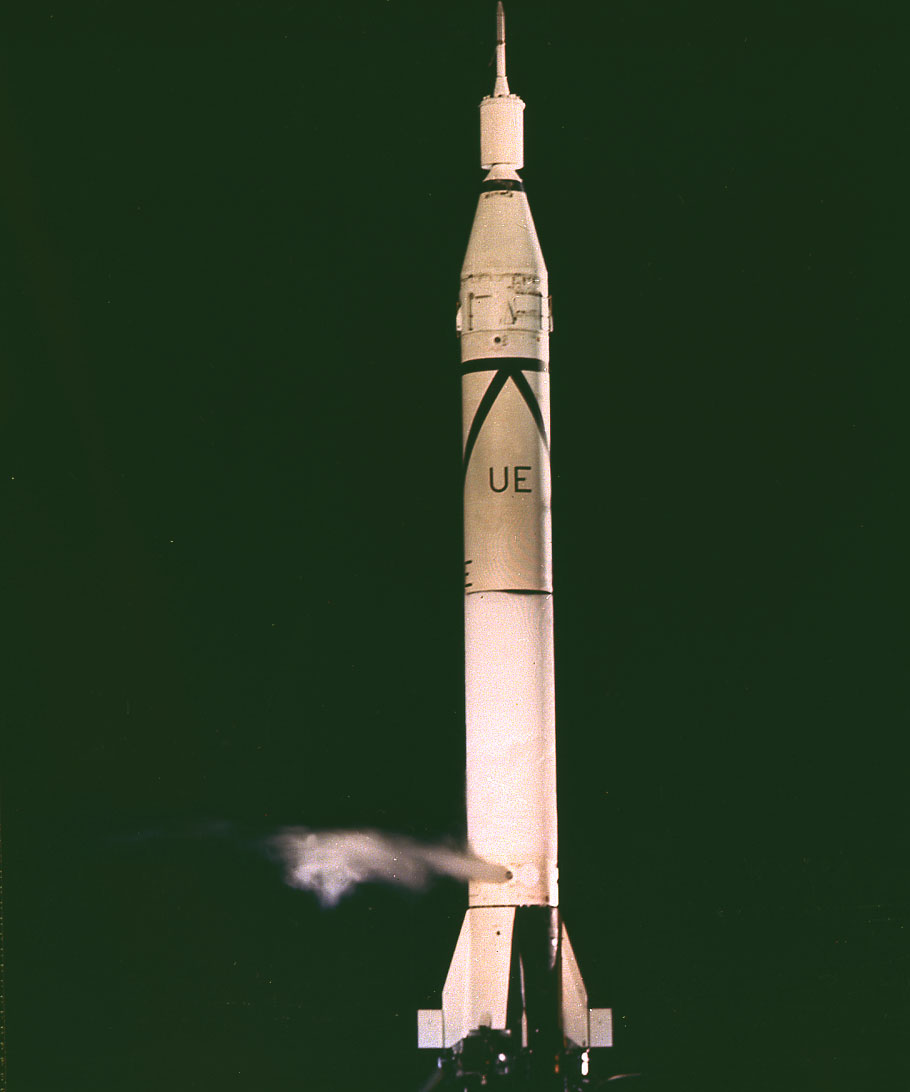
Juno-I
In-activeChrysler (CHR)
Jan. 31, 1958
Description
The Juno I was a four-stage American booster rocket which launched America's first satellite, Explorer 1 in 1958. A member of thr redstone family, it was derived from the Jupiter-C sounding rocket.
Specifications
-
Stages
4 -
Length
21.2 m -
Diameter
1.78 m -
Fairing Diameter
1.78 m -
Launch Mass
29.0 T -
Thrust
416.0 kN
Family
-
Name
Juno-I -
Family
― -
Variant
Juno I -
Alias
― -
Full Name
Juno-I
Payload Capacity
-
Launch Cost
― -
Low Earth Orbit
11.0 kg -
Geostationary Transfer
Orbit
― -
Direct Geostationary
― -
Sun-Synchronous Capacity
―
Chrysler
Commercial
None
CHR 1950In July 1959, NASA chose the Redstone missile as the basis for the Mercury-Redstone Launch Vehicle to be used for suborbital test flights of the Project Mercury spacecraft. Three unmanned MRLV launch attempts were made between November 1960 and March 1961, two of which were successful. The MRLV successfully launched the chimpanzee Ham, and astronauts Alan Shepard and Gus Grissom on three suborbital flights in January, May and July 1961, respectively.
Juno-I | Beacon
Chrysler | United States of AmericaCape Canaveral SFS, FL, USA
Oct. 23, 1958, 3:21 a.m.
Juno-I | Explorer 5
Chrysler | United States of AmericaCape Canaveral SFS, FL, USA
Aug. 24, 1958, 6:17 a.m.
Juno-I | Explorer 4
Chrysler | United States of AmericaCape Canaveral SFS, FL, USA
July 26, 1958, 3 p.m.
Juno-I | Explorer 3
Chrysler | United States of AmericaCape Canaveral SFS, FL, USA
March 26, 1958, 5:38 p.m.
Juno-I | Explorer 2
Chrysler | United States of AmericaCape Canaveral SFS, FL, USA
March 5, 1958, 6:27 p.m.
Falcon 9
Starlink Group 11-14
Space Launch Complex 4E - Vandenberg SFB, CA, USAA batch of 28 satellites for the Starlink mega-constellation - SpaceX's project for space-based Internet communication system.
Falcon 9
Starlink Group 6-81
Space Launch Complex 40 - Cape Canaveral SFS, FL, USAA batch of 29 satellites for the Starlink mega-constellation - SpaceX's project for space-based Internet communication system.
Electron
The Nation God Navigates (iQPS Launch 5)
Rocket Lab Launch Complex 1B - Rocket Lab Launch Complex 1, Mahia Peninsula, New ZealandSynthetic aperture radar Earth observation satellite for Japanese Earth imaging company iQPS.
Ariane 62
Sentinel-1D
Ariane Launch Area 4 - Guiana Space Centre, French GuianaSentinel-1D carries an advanced radar technology to provide an all-weather, day-and-night supply of imagery of Earth’s surface as part of the Sentine…
Long March 7A
Yaogan 46
201 - Wenchang Space Launch Site, People's Republic of ChinaClassified Earth observation satellite officially reported as for "national resources/hydrology/meteorology surveying & disaster management" purposes.

